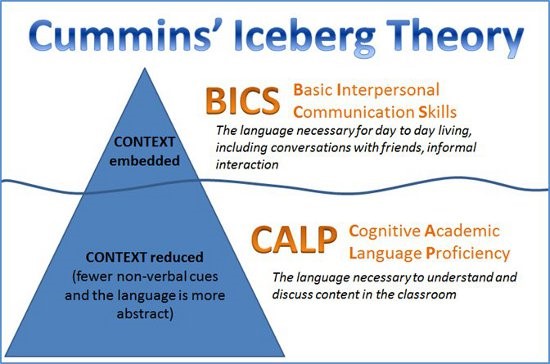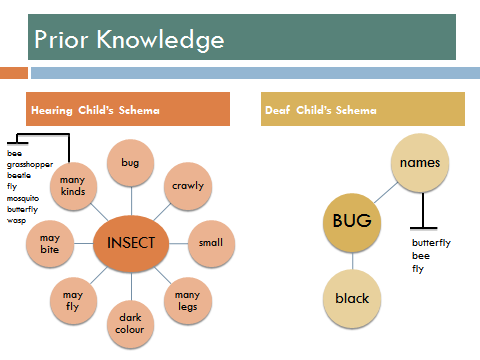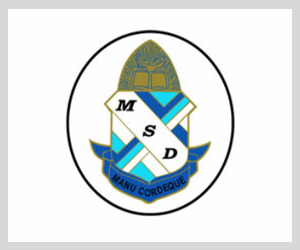Manitoba School for the Deaf (MSD)
Language
What is Language?
Language is a complex communication system that may be spoken, signed or written. It consists of content (vocabulary, semantics, concepts), form (grammar, syntax) and use (social language, pragmatics). The understanding of language (receptive) develops before using language expressively.
Language allows us to attach words to objects and concepts and to develop our minds. It helps us to understand our experiences and how the world around us works. It allows us to talk to ourselves and think, to make our needs and wants known, to interact with others, and to be part of a community. Language enables us to make comparisons, to sequence and plan, to understand explanations, to manipulate ideas, to reason, to make judgments, and to understand that others may have different points of view. Language allows us to develop a theory of mind, to learn academics and to effectively function in our world.
Receptive / Expressive Language

Form
- word order
- word endings
- speech
Content
- word meanings
- the way word meanings link together
- sequencing

Use
- conversation
- social rules
- matching languaage to the situation

Reference: Bloom, L. and M. Lahey, language Development and langauge Disorders. New York, NY: Wiley, 1978.
Speech is not Language
Most people communicate through spoken language, so there may be an assumption that these two things-speech and language- are the same, but they are not.
Speech involves production of vocal sounds to form distinctive words. It requires the coordination of the articulators (lips, tongue, teeth, and soft palate) and use of voice (Boston Center for Deaf and Hard of Hearing Children). A baby babbling is an example of speech sounds without language-there is no meaning.
Language is a rule-governed set of symbols that is shared among people within a culture or a community. Language can be communicated through vocal/spoken words, through symbolic and meaningful visual/manual signs, and through written form (Boston Center for Deaf and Hard of Hearing Children). When we read and write, we are using language but not speech. Using signed language is another example of language that happens without speech. The signs connect to ideas or thoughts and help people to understand the world and other people.
How do children develop language
In order to develop language, children require continuous exposure to a language and rich, repeated and meaningful interactions with conversational partners throughout the day. Various language areas in the child's brain process the information received and begin to attach meaning to the language patterns perceived, whether they are spoken or signed language patterns. In this way, language skills are developed. This is a very complex process.
There is a critical language learning period from birth to age five during which language learning is typically effortless and the brain is primed to form neural connections upon which language is processed and understood. After age five, this brain development slows down, neural connections are deleted if not used, and the development of language becomes more difficult. Lack of access or exposure to early language learning experiences may result in significant delays.
For young children to develop spoken language, it is important to provide them with auditory access through amplification and intensive spoken language exposure as early as possible. Children whose hearing loss is identified in infancy will have an easier time developing listening and spoken language skills than a child whose loss is identified later.
In the same way, for young children to develop ASL, it is important to provide them with visual access and intensive ASL exposure as early as possible. The later a child's hearing loss is identified and the later exposure to language input, the more difficult it will be to develop understanding and use of ASL.
Social vs Academic Language
In order to support language, there are common underlying proficiencies that need to be intact. This is similar to an iceberg, with the language we see and hear on top of the water, but the underlying proficiencies needed to support language (semantic mapping, associating meaning, processing, working memory, analysis, synthesis, evaluation) being under the water. Lack of language results in cognitive deficits (developing reasoning, problem solving skills and higher level abstract language), just as cognitive deficits affect language.

How Language Affects Learning
A strong foundation in a first language is required in order to develop literacy (reading and writing). It is like a pyramid with receptive language on the bottom, then expressive language, then reading, then writing and curricular language at the very top. Each layer supports the development of the layer above it. A deficit at any point, will result in deficits in the areas above.

Prior knowledge or background knowledge also affects language-learning. If a child doesn’t have access to language due to limited hearing or lack of a visual language ( language deprivation), they will have an under-developed schema. A schema is like a map of how we make connections in our learning. So, for example, a child with full access to language may see a “bug” and immediately makes connections with “insect, crawly, small, many legs, dark colour, may fly, may bite, many different kinds”. A child with limited access may not even know the word “bug”, but may only have a schema for “black, fly”. This limited access will have a direct impact on language-learning and on literacy.


- MSD Calendar
- MSD Parents Calendar

- MSD Handbook

- Mission Statement

- Educational Resources
- Educational Research

- Links
- Forms
-
Upcoming Events
-
September 1: Labour Day September 2: Meet the Teacher 3 – 6 pm September 3: First day of school 9 am and Bus Ridership 3 pm September 17: Gr. 6 & 8 Immunization 9:30 am September 17: Hot lunch program September 19: Staff PD Day – (no school) Sep. 21 - 26: International Week of Deaf Peoples September 29: Staff Admin day (No school) September 30: National Day for Truth & Reconciliation (No school)